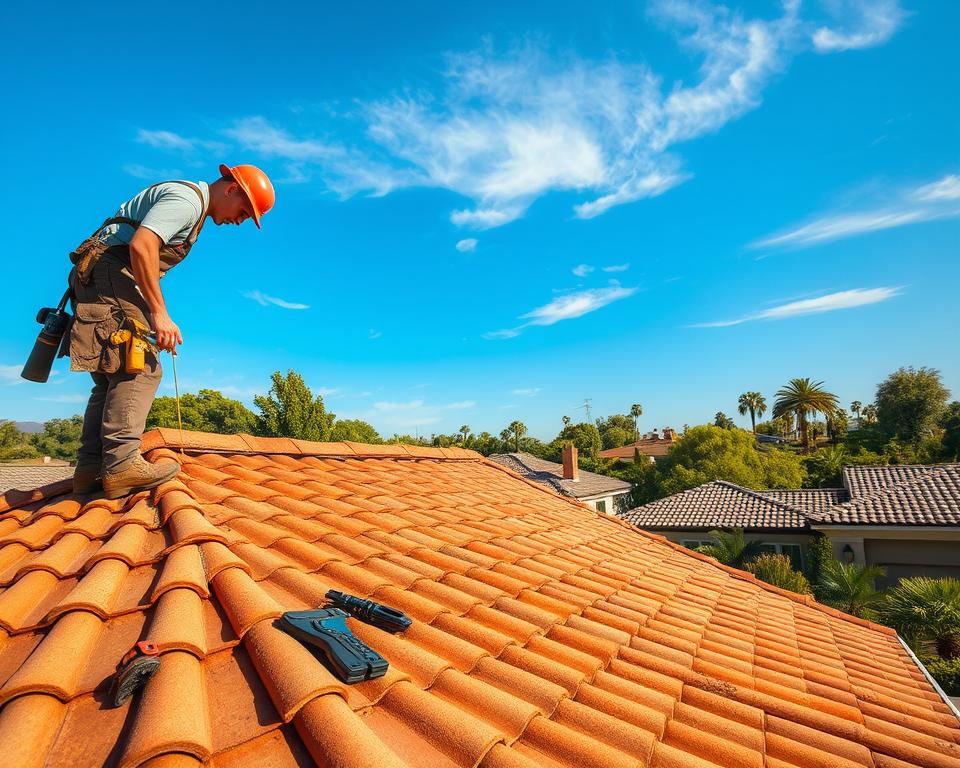How Fibers in Stainless Steel Tube Builds Resilience in Harsh Environments
The Definitive Guide to FTTH cable Production Line
Welcome to the ultimate guide to FTTH cable production line. We will explore the world of fiber optic cables in this comprehensive article, focusing on their critical role in enabling high-speed data transmission. As the demand for faster and more reliable internet connectivity continues to grow, understanding the intricacies of FTTH cable production becomes essential. This guide will offer you valuable insights into the production of FTTH cable production line, covering everything from the fundamentals of cable infrastructure to the detailed manufacturing process.
If you’re just starting out in the industry or want to improve your understanding, this guide is for you. We will explore the key components of FTTH cable systems, the role of optical fibers in FTTH technology, and the process of transforming raw materials into high-quality fiber optic cables. The guide will also touch upon design considerations, stranding techniques, buffering and jacketing processes, and the efficient functioning of the FTTH cable production line.
We will also cover the advanced technologies that are revolutionizing FTTH cable manufacturing, as well as the crucial role of testing and quality assurance in ensuring the reliability and durability of fiber optic cables. We will also cover the final steps of packaging and distribution, ensuring that the FTTH cable production line operates seamlessly from start to finish.
Essential Information:
- High-speed data transmission relies heavily on the FTTH cable production line.
- The fundamentals of FTTH cable infrastructure and its key components are crucial to understand.
- The FTTH cable production process, which goes from silica to fiber, involves fiber drawing, coating application, and testing.
- Performance can be optimized by designing configurations and layouts that satisfy particular network requirements.
- Stranding techniques and central strength members add support and protection to the fiber.
Understanding FTTH cable Production Basics
For a proper understanding of FTTH cable production, one must have a clear grasp of the cable infrastructure, key components, and the significance of optical fibers in FTTH technology.
An Overview of the FTTH cable Infrastructure
This network of cables, connectors, and distribution points, which enables data transmission in fiber-to-the-home (FTTH) systems, is what we call the FTTH cable infrastructure. It forms the backbone of high-speed internet connectivity, allowing for seamless data transfer between the provider’s network and the end user’s premises.

Essential Elements of FTTH cable Systems
Working together, several key components in FTTH cable systems ensure the smooth and efficient transmission of data. These components include:
- Fiber optic cables: These cables are responsible for carrying the data signals in the form of light. Their design focuses on high bandwidth and low signal loss, which guarantees fast and reliable data transmission.
- Crucially, connectors join fiber optic cables to other cables or devices, and they also make it easy to connect and disconnect cables when needed. They provide a secure and reliable connection, minimizing signal loss.
- Multiple end users receive divided and distributed fiber optic signals through the use of distribution points. Without negatively impacting the overall network performance, they help ensure each user receives the necessary bandwidth.
Why Optical Fibers are Key to FTTH Technology
The most important part of FTTH technology is optical fibers. Designed to efficiently transmit data signals as light pulses, these thin strands are made of glass or plastic. High-speed data transmission is ideally suited to optical fibers due to their high bandwidth capacity, low signal loss, and immunity to electromagnetic interference.
Each fiber has a core that carries the light signals, and this core is encased in a cladding layer that reflects the light back into the core, preventing signal loss. Optical fibers can transmit data across vast distances without a decrease in signal quality or speed due to this design.
Step-by-Step Process: From Silica to Fiber
Fiber Drawing: Crafting the Core
Fiber drawing is the initial step in the FTTH cable production process, and it’s where the cable’s core is made. This process involves pulling and stretching a glass preform made from silica, converting it into a long, thin fiber. During fiber drawing, the diameter of the fiber is carefully controlled to ensure optimal performance. The cable’s ability to transmit data efficiently and accurately is largely determined by the quality and composition of the core.
Making Sure It Lasts: The Coating Application Process
After the fiber drawing process, the next step is coating application. The fiber receives a protective layer, known as a coating, at this stage. Acting as a buffer against external factors like moisture is just one of the purposes of the coating, which also improves the fiber’s long-term durability and reliability. Furthermore, the coating material is carefully chosen for its appropriate mechanical properties, ensuring the fiber stays intact and protected throughout its life.
Quality Assurance: Fiber Testing at All Stages
The quality and performance of the fiber are verified through fiber testing, which is done at different stages of the FTTH cable production process. These tests involve measuring the fiber’s physical characteristics like diameter, attenuation, and tensile strength, and also checking the coating for uniformity and how well it sticks. Ensuring that the fiber meets the required standards and specifications is crucial, and these tests help guarantee the overall quality and performance of the final FTTH cables.
| Stage of Production | Testing Parameters |
|---|---|
| Fiber Drawing | Diameter, Attenuation, Tensile Strength |
| Coating Application | Coating Thickness, Uniformity, Adhesion |
FTTH cable Production: Testing Parameters at Different Stages (Table)
Above is a table that summarizes the testing parameters measured at various stages of the FTTH cable production process. Manufacturers can ensure that every fiber used in the cables meets the necessary quality standards by performing thorough testing, which ultimately leads to the high-performance and reliability of FTTH cable systems.
Design Considerations for FTTH cable Configurations
In the realm of fiber-to-the-home (FTTH) cable production, cable configuration design is key to fulfilling network requirements and optimizing performance. cable design involves considering factors such as network capacity, scalability, and the desired speed of data transmission. By adapting cable configurations to their unique needs, companies can guarantee efficient deployment and make the most of their network infrastructure.
You can choose from a variety of FTTH cable configurations and layouts, and each one has its own advantages and considerations:
- The main distribution point is connected to each subscriber in a sequential manner in the Daisy Chain Configuration. This cost-effective solution is ideal for regions with a low number of subscribers.
- A direct connection between each subscriber and the central office or hub is characteristic of the star configuration. It’s a flexible design that’s easy to maintain, making it ideal for areas with a high population density.
- The ring configuration connects subscribers in a circular pattern. It offers redundancy and fault tolerance, ensuring uninterrupted service in case of network failures.
- Tree Configuration: In a tree configuration, the main distribution point is connected to secondary distribution points, which then connect to individual subscribers. Network expansion is efficient with this configuration, and it’s commonly used in areas with a high number of subscribers.
- Mesh Configuration: The mesh configuration provides multiple connections between distribution points, offering high reliability and redundancy. It’s typically used in applications that are critical and require service without any interruptions.
When designing FTTH cable configurations, it is essential to consider the network requirements and expected future growth. The best configuration to choose depends on things like how many subscribers there are, where they are located, and what kind of service they need, as each configuration has its own advantages and disadvantages.
Companies can create FTTH cable configurations that are tailored to their specific network needs and provide the best performance by carefully considering these factors and working with experts in the field.
Methods and Tools for Stranding
The strength and durability of FTTH cables are greatly influenced by the stranding techniques and equipment used in their production. Various stranding patterns are used, and each one has its own benefits and is suitable for different purposes. Selecting the correct stranding machinery is crucial for producing cables efficiently and to a high standard. Central strength members also play a role in providing extra support and protection to the fiber, which contributes to the overall reliability of the FTTH cables.
Understanding the Different Stranding Patterns
When producing FTTH cables, one of the main things to consider is which stranding pattern to use. Various stranding patterns, such as reverse concentric, SZ stranding, and helical stranding, are used depending on the desired characteristics of the cable. In terms of flexibility, strength, and how well it resists external factors, each pattern has unique features that can enhance the cable’s performance. The specific needs of the application are met through the careful selection of stranding patterns, which guarantees optimal performance and a long life for the FTTH cables.
How to Choose Stranding Machinery
Stranding machinery is a crucial component of the FTTH cable production line. The stranding pattern can be precisely formed thanks to this machinery, which also keeps the fibers at the necessary tension and in the correct alignment. The right Fibers in metal tube machinery to choose will depend on things like the cable’s diameter, the speed of production, and how automated you want the process to be. Because advanced stranding machines are more efficient and flexible, manufacturers can produce a large number of cables and also offer customization.
Central Strength Members: Their Purpose
Using central strength members in FTTH cables helps to enhance their mechanical properties. The delicate fiber inside the cable is protected, and the cable gains stability and improved tensile strength from them. Acting as a backbone and made from materials like aramid or fiberglass, the central strength members reinforce the cable structure and help it withstand external forces. They ensure that FTTH cables can handle the stresses of being installed and that the signal transmission remains intact, making them appropriate for various deployment scenarios.
The Role of Buffering and Jacketing in Fiber Protection
In the production of FTTH cables, the buffering and jacketing processes play a crucial role in protecting the delicate fiber inside. The fiber is shielded from a variety of potential threats, including moisture, abrasion, and other external factors that could negatively impact its performance and lifespan, thanks to these processes.
Understanding the Buffering Process
Applying a protective layer around the fiber is what the buffering process involves, and this layer acts as a barrier against environmental elements. This layer stops water from getting inside, which can cause the signal to be lost or even the fiber to break. In addition, buffering enhances the cable’s ability to withstand rubbing, which reduces the likelihood of damage when it’s installed or being worked on.
The buffering materials used must exhibit excellent adhesion to the fiber and possess a low coefficient of friction to minimize stress on the fiber. The appropriate buffering material to select will depend on factors like the environmental conditions the cable will be in and the level of protection that is needed.
How to Select Jacketing Materials
Putting an outer layer on to give extra protection to the fiber and the buffering materials is what jacketing involves. Specific selection of the jacketing material is made to offer strong protection against mechanical stress, impact, UV radiation, and other potential hazards.
When choosing jacketing materials, things like how flexible they are, how well they resist fire, and whether they can handle the environment they’ll be in are all taken into account. You’ll often find jacketing made from materials like polyethylene (PE), polyvinyl chloride (PVC), and low-smoke zero-halogen (LSZH) compounds. Depending on the specific application and what the industry standards require, a material will be chosen, as each has its own advantages and disadvantages.
The Application of Cutting-Edge Jacketing Technologies
Protecting FTTH cables has been completely changed by the latest improvements in jacketing technologies. These latest technologies provide better strength, more flexibility, and improved resistance to environmental factors, leading to greater durability and reliability.
One of the innovative jacketing technologies includes tight-buffered cables, where each fiber is individually buffered with a thin layer of plastic, providing excellent protection and flexibility. Micro-ducts are another technology, and they use strong tubes to hold multiple fibers, which allows for high density and makes cable installation versatile.
In addition, there are special jacketing technologies that are made to meet the specific needs of different industries. Armored jackets might be used on cables that are in harsh outdoor environments, for example, to give them better protection against rodents, moisture, and extreme temperatures.
The latest jacketing technologies make it possible to customize FTTH cables for various applications, ensuring they perform optimally, last a long time, and are reliable.
Operations on the FTTH cable Production Line
In the FTTH cable production line, efficient operations are crucial to ensure a smooth and streamlined manufacturing process. The production of high-quality fiber optic cables for high-speed internet connectivity relies on each step in the production line being vital. Manufacturers utilize various machinery and equipment to achieve optimal efficiency.
Raw materials are prepared first in the manufacturing process, and this includes the silica that will be used for fiber drawing. After that, the fiber drawing process starts, and the cable’s core is carefully crafted to meet the desired specifications. Following fiber drawing, coating application is performed to ensure the fiber’s durability and protection.
The highest standards for the cables are ensured by making quality a top priority and conducting rigorous fiber testing at every stage of the production line. This includes testing for factors like attenuation, bandwidth, and signal loss.
The operations of the FTTH cable production line depend on efficiency. Optimizing the use of machinery and equipment allows manufacturers to reduce production time and costs and increase the amount they produce. Additionally, efficient processes contribute to the overall quality of the cables.
The manufacturing process can be complex, involving various stages and components. But, if manufacturers use efficient operations and constantly try to make things better, they can enhance how well and effectively their FTTH cable production line works.
To provide a holistic understanding of the FTTH cable production line operations, the following table provides a summary of key machinery and their roles in the manufacturing process:
| Machine | Role |
|---|---|
| Fiber Drawing Machine | Produces the fiber optic cable core by pulling and stretching the silica material. |
| Coating Machine | Applies a protective coating to the fiber optic cable, ensuring durability and resistance to external factors. |
| Fiber Testing Equipment | Conducts various tests on the fiber optic cable to ensure quality and performance. |
| Spooling Machine | Winds the finished fiber optic cable onto spools for packaging and distribution. |
| Jacketing Machine | Applies an outer jacket to the fiber optic cable, providing additional protection and enhancing its handling. |
Manufacturers can make their production line operations more efficient, improve how well they work, and provide high-quality FTTH cables that meet the growing need for high-speed internet connectivity by using advanced machinery and technologies.
Latest Technologies Used in FTTH cable Manufacturing
The field of FTTH (Fiber to the Home) cable manufacturing is constantly changing, and advanced technologies are crucial for making it more efficient and of higher quality. Automation, AI integration, and fiber coloring machines have completely changed the production process due to the increasing demand for high-speed data transmission, which has driven innovation and led to the creation of superior products.
Using Automation to Produce Fiber Optic cables
Automation has had a big impact on how fiber optic cables are manufactured. The manufacturing process can be controlled very precisely thanks to advanced machinery and robotics, which leads to consistent quality and fewer errors. Automation makes it possible to produce more cables in less time and with greater accuracy, which ultimately saves money and leads to happier customers.
Integration of AI for Quality Control
Using artificial intelligence (AI) in the quality control process allows FTTH cable manufacturers to reach new levels of accuracy and reliability. In real-time, AI algorithms can look at the data from production and find any differences or problems that might affect how good the cables are. This proactive method of quality control helps to minimize errors, make production more efficient, and guarantee that only the best FTTH cables are put on the market.
What Fiber Coloring Machines Can Do
Fiber coloring machines have completely changed how FTTH cables are made by providing more options for customization. Color codes can be applied to optical fiber strands by fiber coloring machines, which allows for easy identification and makes cable management more efficient during installation and maintenance. This technology gets rid of the need to color-code by hand, which reduces the possibility of errors and makes the whole process of deploying cables more efficient.
Ensuring Quality: Testing and Quality Assurance in Fiber Optics
In the world of fiber optics, ensuring the highest quality is of utmost importance. This is achieved by using thorough testing and quality assurance methods throughout the entire production process. Standardized testing protocols play a crucial role in guaranteeing the reliability and consistency of fiber optic cables.
Implementing Standardized Testing Protocols
Standardized testing protocols are established to ensure that every fiber optic cable meets the required quality standards. These protocols detail the specific testing procedures and criteria that must be followed at each stage of the production process. By adhering to these protocols, manufacturers can identify and address any potential issues, ensuring that only the highest quality cables are delivered to customers.
The Importance of OTDR in Ensuring Quality
Performing quality checks on fiber optic cables requires the integral use of Optical Time-Domain Reflectometer (OTDR). A testing instrument that uses light pulses to measure signal loss and reflection along an optical fiber is called OTDR. Technicians can find problems like fiber bending, signal loss, or damage to connectors by looking at the OTDR traces. This allows them to identify the precise location of any faults and take corrective measures, guaranteeing the cable’s overall quality and performance.
Steps to Maintain Rigorous Quality Assurance Standards
Maintaining quality assurance standards throughout the entire production process is key to ensuring consistent and reliable performance of fiber optic cables. These standards cover various aspects, including material selection, manufacturing processes, and final product testing. These rigorous standards help manufacturers ensure that their products achieve the highest levels of quality and performance that the industry requires.
How FTTH cables are Packaged and Distributed
Packaging and distribution, the final steps in compact fiber unit production, are what this section is about. After the cables have been manufactured, it’s important to package them correctly and efficiently to make it easier to deploy and install them. Also, using protective packaging is very important for keeping the delicate fiber optic cables safe while they are being transported and stored. Efficient logistics and supply chain management are crucial for making sure FTTH products are delivered to customers promptly and effectively meet their connectivity needs.
How to Spool cables Efficiently
Smooth and convenient installation of FTTH cables depends on using efficient cable spooling techniques. Storing and transporting cables in an organized and practical way is possible with cable spools, which also reduces the chance of them getting tangled or damaged. Using optimized cable spooling techniques allows cable installers to save both time and effort during the deployment process. Cables that are spooled correctly make the installation look better overall, ensuring it’s neat and professional.
Packaging Solutions for Safeguarding Fiber Optic cables
To protect the delicate fiber optic cables during transportation and storage, it is essential to implement effective protective packaging solutions. The packaging should provide cushioning, absorb shocks, and resist external factors such as moisture, dust, and physical impact. Manufacturers can make sure the fiber optic cables arrive in perfect condition and ready to be installed by using high-quality packaging materials and techniques. The integrity of the cables is protected, and customer satisfaction is also improved by minimizing the risk of damage or the cables not working properly.
Logistics and Supply Chain Management for FTTH Products
For FTTH products to be delivered to customers successfully, efficient logistics and supply chain management are crucial. This includes making careful plans for how the cables will be transported, stored, and distributed to ensure they arrive when they should and are reliable. Managing the supply chain effectively helps minimize delays and optimize the flow of products, reducing costs and improving customer service..
Summary
In summary, this ultimate guide to the FTTH cable production line has offered a comprehensive overview of the process of manufacturing fiber optic cables for high-speed internet connectivity. Throughout this article, we have emphasized how important the FTTH cable production line is for making fast and reliable data transmission possible.
The ability to have seamless communication, streaming, and online activities through high-speed internet connectivity depends on the critical role played by fiber optic cables. This process, which goes step by step from fiber drawing to buffering and jacketing, ensures that FTTH cables are durable and of high quality.
Advanced technologies, such as automation and AI integration, have revolutionized the manufacturing process, increasing efficiency and accuracy. Also, the reliability and performance of fiber optics are guaranteed by following standardized testing protocols and strict quality assurance standards.
Making sure these essential cables are deployed efficiently and protected during transportation is the purpose of the final steps in FTTH cable production: packaging and distribution. The increasing global demand for high-speed internet connectivity can only be met thanks to the expertise and precision involved in the FTTH cable production line.








